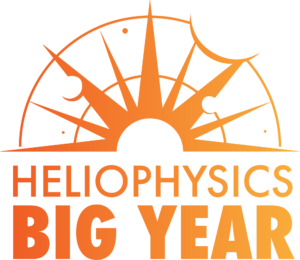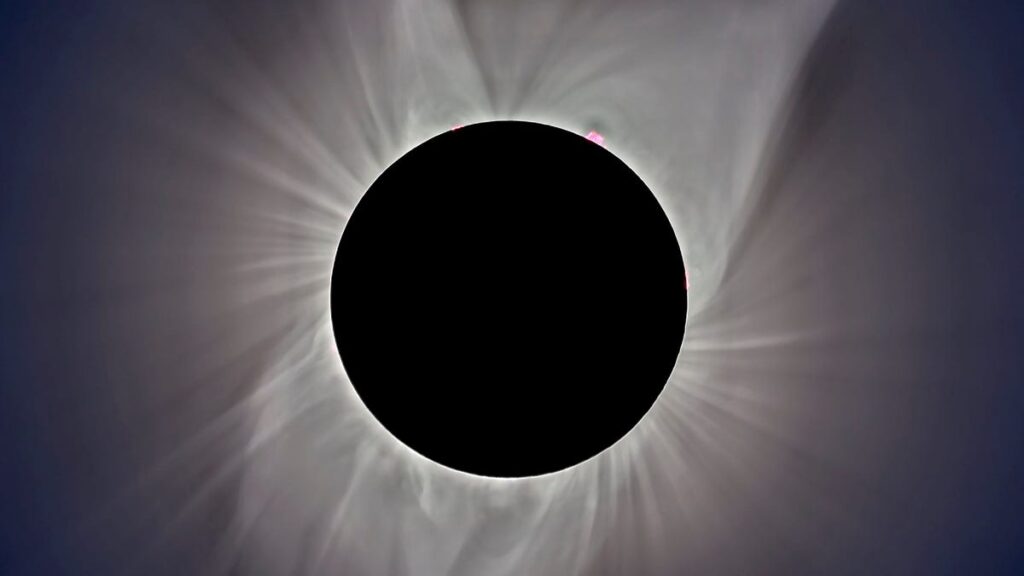The Sun and You

by Jeff Nee, Jet Propulsion Lab

So you and your library patrons had a wonderful eclipse experience? Don’t let that feeling go! Whether you basked in the awesome phenomenon of totality, or you just had fun making crafts and watching the NASA livestream, strike while the iron is hot! NASA is taking all of 2024 to celebrate the Big Year in Heliophysics, the study of the Sun and its effects on everything in the solar system, including you. So you can still engage your community in wonderful STEAM events, such as the Parker Solar Probe touching the Sun on December 24.
How many stars do you think are in the solar system? Take a moment…
One! The Sun is by far the most important object in our solar system, just like every star in the universe is the most important object in its own star system. In fact, since the Sun accounts for 99.8% of all the mass, it wouldn’t even be inaccurate to say that the Sun IS the solar system. Yes, all the planets, dwarf planets, moons, asteroids, comets, bits of dust, and, of course, you and everything you love and cherish, combine to only 0.2% of the solar system.
Not only that, the Sun also provides practically all the energy you and everyone on Earth uses. From the food you eat to the gas in your car, it’s all direct or indirect energy from the Sun (NB: Iceland and some others use some geothermal energy). Also, also, too much energy from the Sun can be catastrophic. From sunburns and skin cancer to the potential destruction of the global power grid, the Sun is one of the biggest dangers in space. Observing and understanding the Sun, what’s happening, exactly how and why it works, is vitally important, especially as our technology advances and as humans venture out farther into space.
2024 is a special year, not only because of the North American eclipses that helped hype and prime your audiences for solar science, but because Solar Maximum is predicted to come, which is part of the reason Parker is poised to study the Sun now. It’s the time of most solar activity in ~11-year cycle (minimum was in 2019). For you, that means any solar viewing events you plan are more likely to have numerous and spectacular sunspots, perhaps even an aurora or two for those who have never seen one before. Also, you’ll have lots of information and resources from NASA to help you. We hope you’ll stay on the bandwagon to extend the excitement from the eclipses through 2024 and beyond to celebrate our very own star!
Background Info:
The Parker Solar Probe:
- Launched August 12, 2018
- First touched the Sun in 2021
- Named after the late Eugene Parker (1927-2022) – the first person to see NASA launch a spacecraft bearing his own name
- December 24, 2024 will begin the “close approach” for the best views and data of the Sun, more than seven times closer than ever before!
- Where is it right now? (show on any screen and/or embed as an iframe into any website)
Continuing Solar Science in Your Library:
For those who haven’t thought about it before, yes, the Sun is one of the most important things for scientists to study today, and we want you and your audiences on board!
- Keep your eclipse glasses! Firstly, they’re actually called “solar viewing glasses.” They’re not actually for looking at eclipses; they’re for safely looking at the Sun on any sunny day! The Sun is an amazing object to safely observe for any daytime event. Remember all the tools and techniques you used for the eclipse; they’ll work just as well without an eclipse. Safe, approved solar filters are usable for years with proper care and storage. Remember that eclipses happen almost every year. Find future eclipse content, and help foster your community’s eclipse chasers!
- Continue to host Solar STEAM events! Like above, everything you did to celebrate the eclipse can be done again to celebrate Solar Science. From solar viewing, to arts and crafts, to citizen science, to showing NASA videos, and more! Most importantly, Solar Maximum is coming, and that means more activity, such as sunspots and auroras, will be visible this year.
- Celebrate Parker Solar Probe! As the NASA mission that will get humanity closer to the Sun than ever (insert Icarus jokes here), spread the word to your audiences through any means that you like: during the events above, on your website, social media, etc.
Featured Resources:
Need something you can use in your library TODAY? Or want something to inspire your next event?
- If you can only do one thing, set up an easy, instant scale model as a display/activity to show how Parker will be within arm’s reach of the Sun! Need more? Try the NASA CONNECTS resources to build a whole scale model solar system, such as this easy one-pager with example project.
- Looking for a bit more? Try crafting a scale model of the Parker spacecraft, both simple for younger patrons and advanced versions for a glass-case-worthy library display. Couple it with digital models such as Augmented Reality, downloadable, 3D printable, or web interactive that you can embed into your very own library website (helps with your web metrics as well!) or use in a “Where is Parker Now?” physical display.
- Finally, follow and share Parker and Heliophysics news from the main website, the Heliophysics Big Year site, as well as on social media such as Facebook, X, and/or Instagram. If you have any questions or requests regarding Parker, Heliophysics, or any NASA project, the Alliance is here for you! Reach out to jeffrey.nee@jpl.nasa.gov. Thank you for inspiring the next generation of explorers and for all you do to engage your patrons in the wonders of the universe! Other fun bits you might like:





Responses